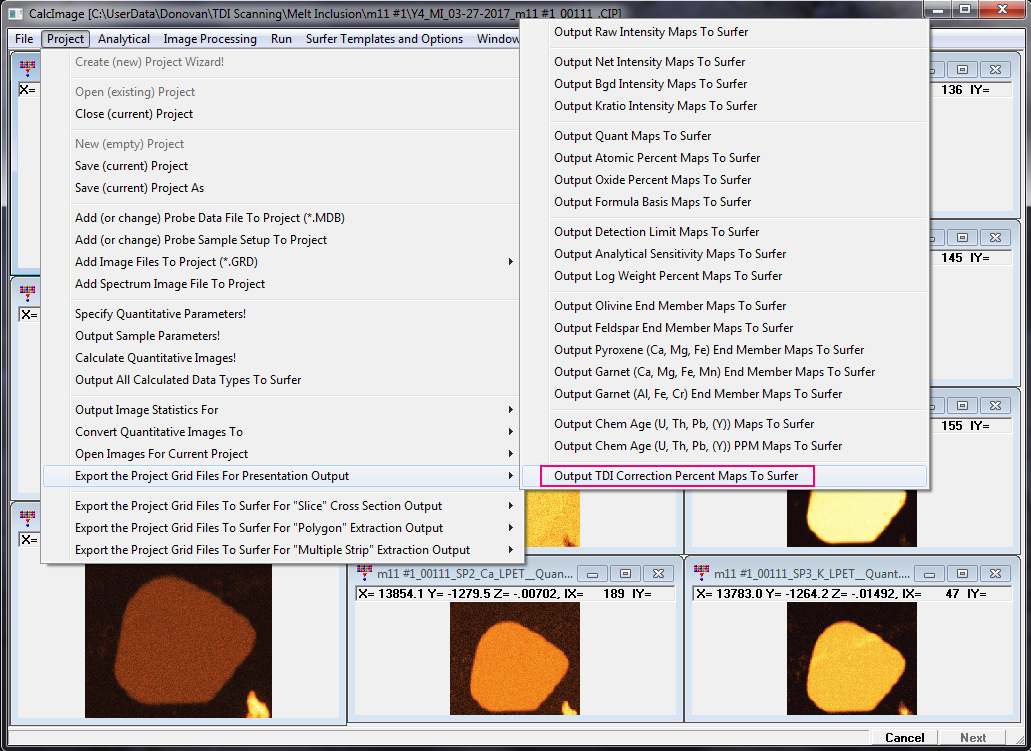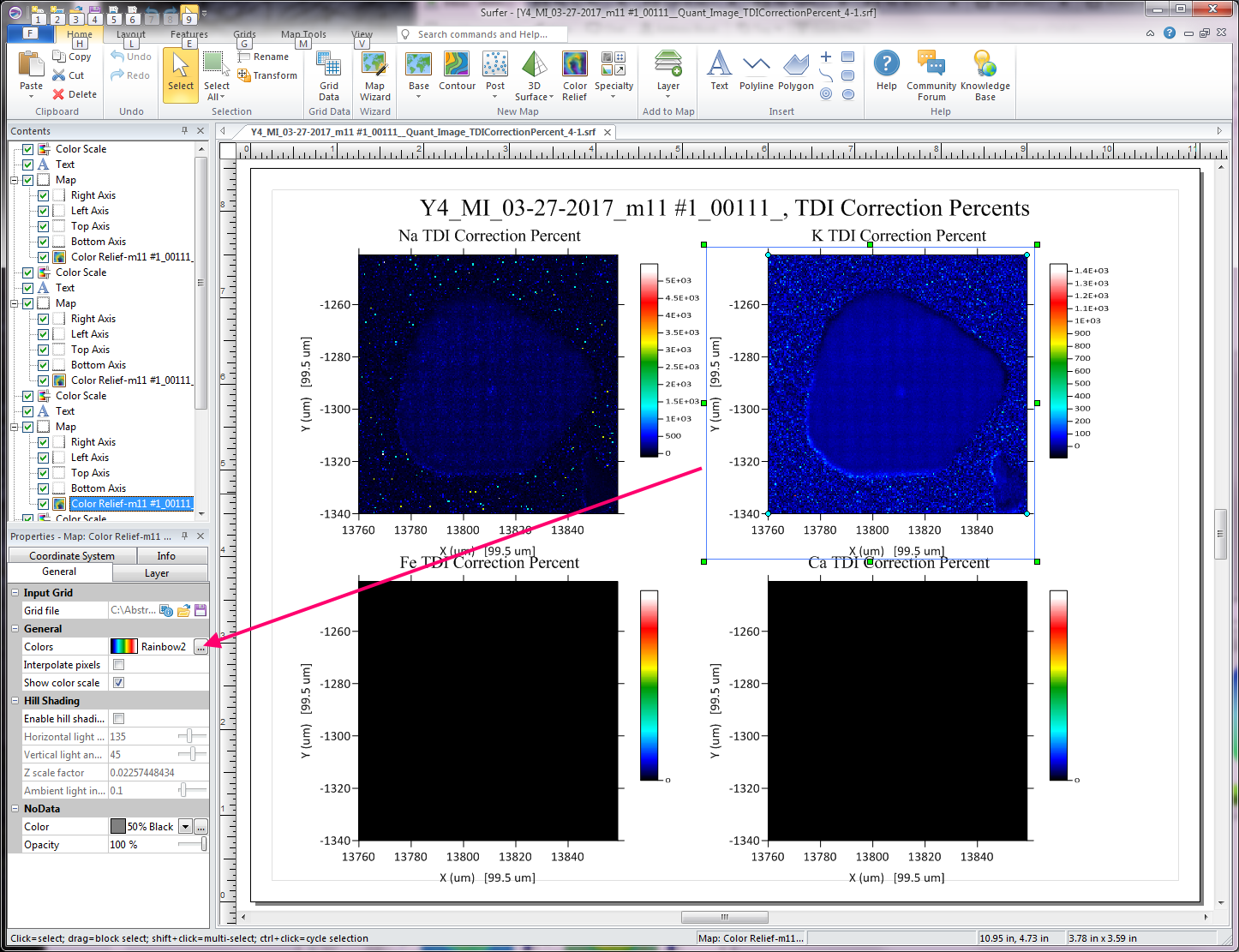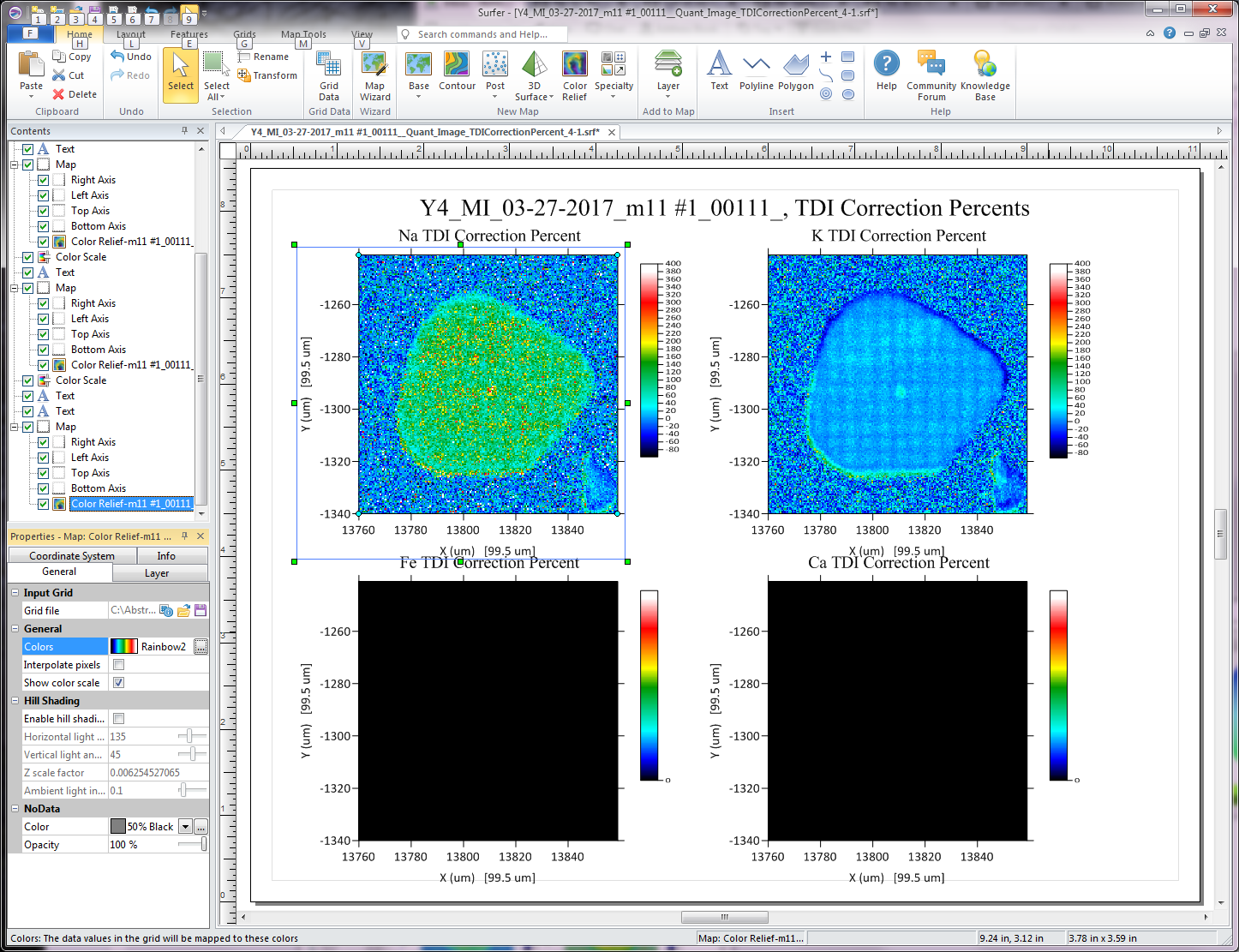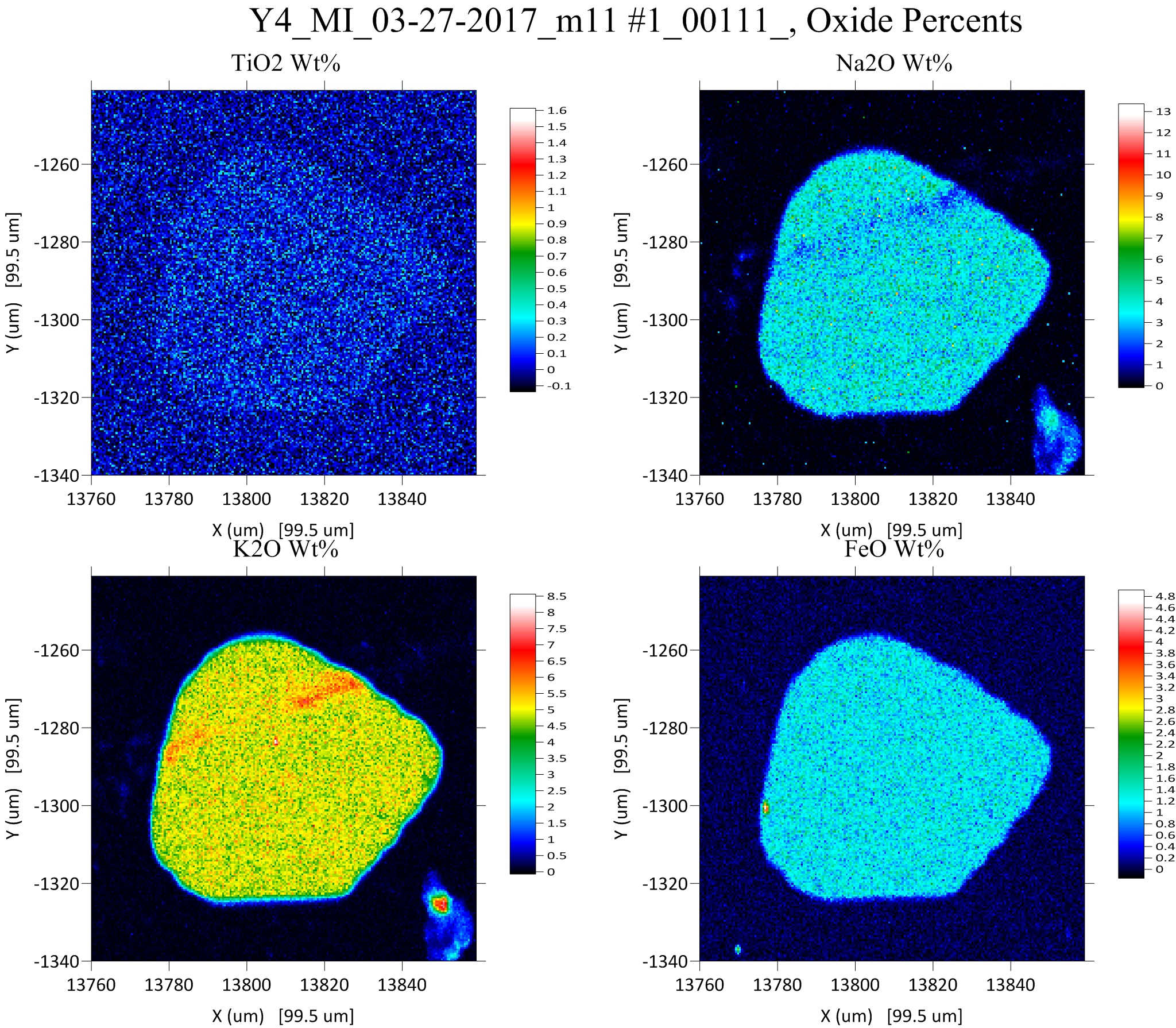As many of you know, in addition to performing a full background, matrix, and interference correction for quantitative x-ray maps, CalcImage also can perform a time dependent (TDI) correction for when mapping beam sensitive samples. This is done by acquiring "replicate" maps at the on-peak emission positions, which allows CalcImage to correct the on-peak intensities for TDI effects, by extrapolating back to zero time.
This is very similar to how the TDI correction for point analyses in Probe for EPMA is performed, except that instead of the extrapolating back tens of seconds to zero elapsed time, the TDI correction in CalcImage extrapolates *hours* back to zero time, due to the long acquisition time for x-ray maps! Yes, I also did not believe this could possibly work, but indeed it does as shown in the last plot in this post above:
https://probesoftware.com/smf/index.php?topic=912.msg5904#msg5904The reason I suspect this TDI scanning correction for x-ray maps works, is because for a given stage (or beam) position, the ions only migrate as they heat up from beam exposure, and then once the beam scans past, the ions stop migrating again, until the next replicate TDI scan comes back hours later. And this change in emission intensities over time, is captured nicely by these replicate map scans.
Anyway, as part of this quantitative TDI correction for x-ray maps, the program automatically calculates a "TDI correction percent" for each map pixel for the TDI elements (those elements which are acquired first before any prior beam damage has occurred). These TDI Correction Percent maps are the relative percent TDI correction that was applied to each pixel, due to the TDI correction during the x-ray map quantification.
Julien Allaz, who has been doing a number of TDI scans on beam sensitive samples for quantitative x-ray mapping, recently wondered if we could display the TDI correction percent images in CalcImage more easily. At that time, one would need to load each TDI Correction Percent GRD file using the File menu in CalcImage and then (if desired) utilize the Output Currently Displayed Maps to Surfer option.
So after a bit of work, the team at Probe Software has added two new menus to the Project menu in CalcImage. First a new menu in the Export the Project Grid Files for Presentation Output menu shown here:

and also a similar menu in the Open Images for Current Project menu. Here are the calculated TDI correction percent images for a melt inclusion in a quartz matrix using the new Open Images for Current Project menu:

First notice that only TDI corrections for Na, K and Si show any results, and this is because the TDI corrections for Fe and Ca were turned off (because these elements are not subject to ion migration and hence applying the corrections just increases the scatter in the data). Next notice that the Na and K TDI correction percent images are a bit dark, and that is because although the absolute intensities of the quartz pixels are low, the TDI corrections (in relative percent) can be very high, thus producing a "hot pixel" effect, thus swamping the TDI corrections in the melt inclusion.
So let's export these TDI correction percent maps to Surfer (or into almost any other image processing software) and make some adjustments there as seen here:

Once we change the maximum value in the "Colors" dialog to a more reasonable number, we get a much better display as seen here:

And just to complete the story, here is the presentation output (which is also easily modified), showing oxide weight percents in this melt inclusion for a few of the elements:

Note how the "gridding" pattern seen in the raw data is almost entirely corrected for by the TDI correction. As for where this "gridding" effect comes from, see the discussion here:
https://probesoftware.com/smf/index.php?topic=144.msg590#msg590It is an area of active research and I welcome any suggestions or advice!